Butcher Block Countertop quote seems ridiculous--are we insane?
winegeek819
16 years ago
Featured Answer
Sort by:Oldest
Comments (27)
raehelen
16 years agosue36
16 years agoRelated Discussions
Favorite Wood Counter/Butcher Block Companies?
Comments (55)So, I priced a 12 x 18 x 1.5 Walnut cutting board... Hardwood Lumber Company $47.52 + shipping John Boos $105 (shipping included) A rather substantial price difference that will be magnified when you're talking in terms of island countertops. (Depending on how far you live from Ohio where HLC is located regarding cost of shipping.) For those of us on tight budgets and who don't mind investing a little sweat equity, it is a good thing to have lower priced alternatives....See Morebutcher's block countertops: pros/cons
Comments (3)There have been numerous posts like this in the last few weeks, so if the search function is working again you might like to check on other conversations. We have butcherblock (hard rock maple) on the island in our kitchen. I love it. Period. Part is that my grandfather used butcherblock his whole life, part is that I have used it since I learned to cook, for sure. But I really love that I don't have to freak out when my kids cut on it, or a friend comes and wants to help in the kitchen, or that I can do almost anything on it and it forgives me! And I love to oil it (apparently not even close to how stoners feel!) and see how it changes with the oil. I don;t have soapstone but envy those who do. Listen to florida joshua - he has a really cool butcher block counter and he works with soapstone! Good luck!...See MoreBest way to finish butcher block counters? Waterlox, poly, tung?
Comments (2)Little late to the rodeo here, and I guess you got the butcher block finished already. When I installed kitchens, we used a product called "Good Stuff" that Bally block recommended . It was kinda an oil based paste that you rubbed in then buffed off. Several coats provided a nice matte finish. Cant attest for how long the finish lasts, but I've never got a call back to re apply....See MoreAnyone have a butcher block counter they cut on?
Comments (19)Growing up, my mom had a built in cutting board. I don't remember squares, so it must have been long runs of wood. I sure am glad I grew up before the media invented germs. We cut everything on it and just cleaned it with Windex. That's all. I don't recall her ever oiling it, never salting it, never, God knows, sanding it. Just Windex. Then the towel was hung over the base cabinet door for the next use. We baked on it, made sandwiches for lunch on it, cut cold-cuts on it, chicken, stew meat, dough, I do mean everything. Probably my own fingers at times, since I cut myself a lot. I do recall opening a can and slicing both thumb and index finger trying to get the lid off. On that counter... I just made my own 24" and 14' wood counter tops (10-12' pieces of maple). Can't call them butcher blocks because I don't want to rile the purists. I haven't done anything about sealing them yet, because I want to color them. My trouble is maple splotches and I want to do it right. Anyway, by the stove, I'll probably cut on it. Where it goes into the dining area? Probably not....See Morenovember
16 years agomary_in_nc
16 years agomommycooks
16 years agoplants4
16 years agoedlakin
16 years agomnhockeymom
16 years agosales_thebutcherblocktop_com
16 years agoclaybabe
16 years agopharaoh
16 years agoamy2202
16 years agojess111
16 years agopaul_ma
16 years agokkupstate
16 years agoremodel1958
16 years agopaul_ma
16 years agowebadmin_thebutcherblocktop_com
16 years agoedlakin
16 years agoamy2202
16 years agopaul_ma
16 years agotalley_sue_nyc
16 years agodeegw
16 years agochiefneil
16 years agoJon1270
16 years agoUser
16 years ago
Related Stories
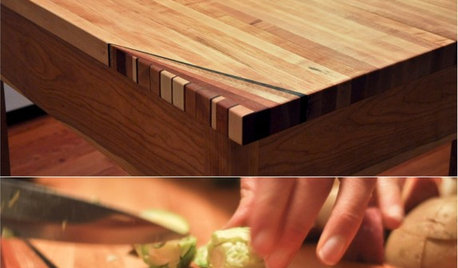
WOODWORKINGHow to Clean and Care for Your Butcher Block
Keep butcher block counters and boards looking sharp as a knife — and sanitized for safe food prep — with this advice from a pro woodworker
Full Story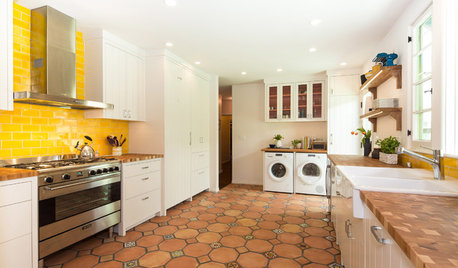
KITCHEN DESIGNNew This Week: 4 Surprising Backsplash and Countertop Pairings
Make your kitchen workspace stand out with colored ceramic tile, back-painted glass, butcher block and more
Full Story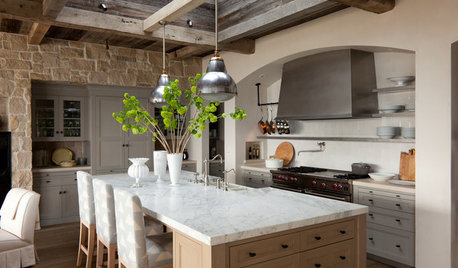
KITCHEN DESIGNHouzz Quiz: What Kitchen Countertop Is Right For You?
The options for kitchen countertops can seem endless. Take our quiz to help you narrow down your selection
Full Story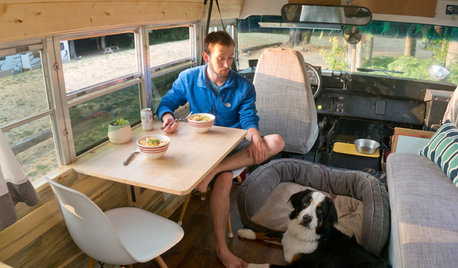
TINY HOUSESAdventure Seekers Hit the Road in a Cozy School Bus Home
Wood floors, butcher block countertops, custom furnishings and LED lights make life on the road feel like just another stylish day at home
Full Story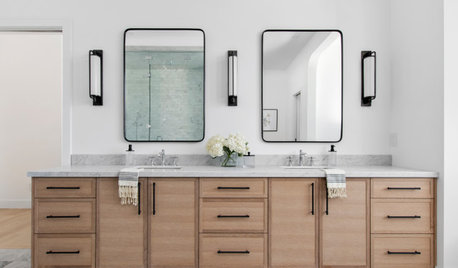
HOUSEKEEPINGHow to Clean Marble Countertops and Tile
Acidic solutions can damage your marble surfaces. Here’s how to keep marble looking clean and amazing
Full Story
MOST POPULARYour Guide to 15 Popular Kitchen Countertop Materials
Get details and costs on top counter materials to help you narrow down the choices for your kitchen
Full Story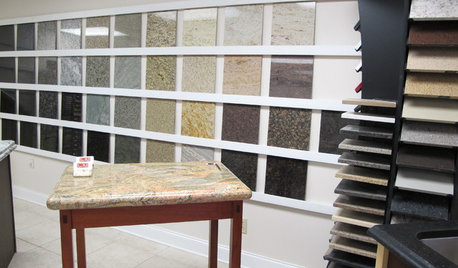
KITCHEN COUNTERTOPSWalk Through a Granite Countertop Installation — Showroom to Finish
Learn exactly what to expect during a granite installation and how to maximize your investment
Full Story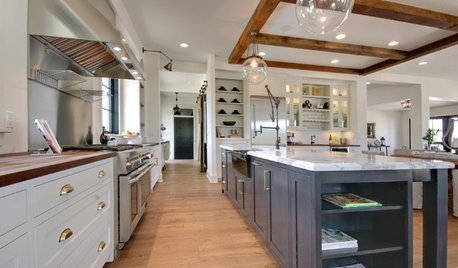
KITCHEN COUNTERTOPS10 Countertop Mashups for the Kitchen
Contrast or complement textures, tones and more by using a mix of materials for countertops and island tops
Full Story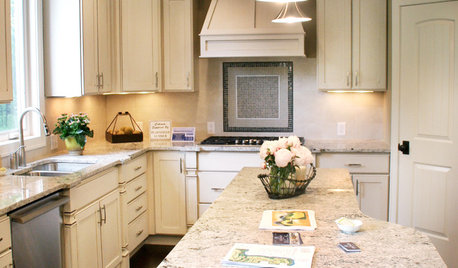
KITCHEN DESIGNKitchen Countertops 101: Choosing a Surface Material
Explore the pros and cons of 11 kitchen countertop materials. The options may surprise you
Full Story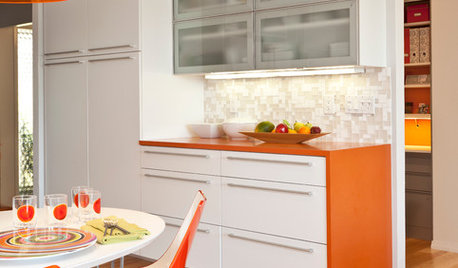
KITCHEN DESIGNCountertop and Backsplash: Making the Perfect Match
Zero in on a kitchen combo you'll love with these strategies and great countertop-backsplash mixes for inspiration
Full Story





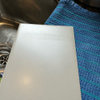
north40mom